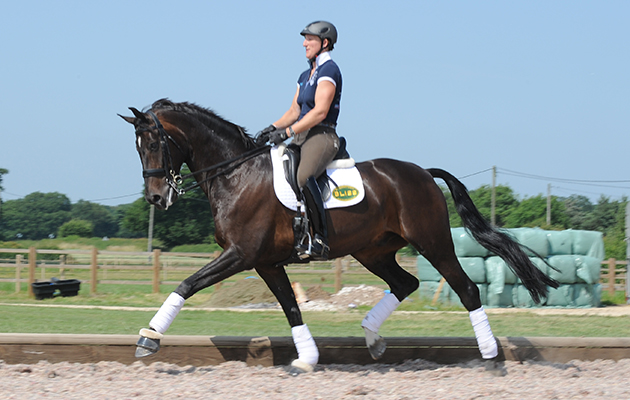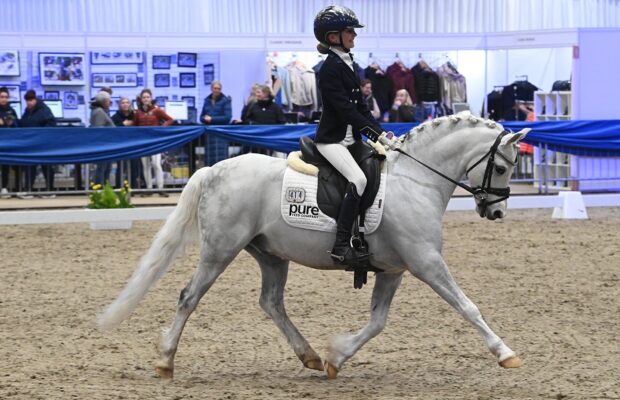Ruth Edge began her equestrian career in eventing with many wins at the highest level, including the Luhmühlen CCI4* (now five-star) in 2007 with Two Thyme. She has always been passionate about dressage and since 2016 has made this her focus. With her sights firmly set on the Tokyo 2020 Olympics, she already has six national titles to her name. She is based at the Foston Stud, near Uttoxeter, where she trains competition horses and teaches. Here, the eventer turned dressage rider suggests some easy exercises to help develop your horse’s trot
Training the stars
- I had a dressage horse, Zero, who had a very ordinary trot as a young horse, but I always had the feeling there was a “big trot” in him somewhere. Having developed in strength and suppleness, by the time he was seven he had a medium trot that had so much scope, he felt amazingly powerful and light.
- One horse I evented, Carnaval Prince II, had a “pony trot”, not helped by the fact he was rather nervous in the arena. As he became more confident, he was able to show off his medium trot, producing consistently high-scoring percentages.
For a horse to be able to lengthen his stride, he needs to be engaged, supple, in front of the leg, straight and have a back-to-front connection maintained by being ridden between the hand and the leg.
Not many horses have an amazing trot by nature, so our job is to train them to be the best they can be. Try these exercises…
Tackling the issue
1. Trot in a figure of eight with straight lines across the diagonal, ensuring the trot feels the same on the half-circle and diagonal. Often, the trot loses rhythm and cadence across the diagonal, so keep your leg on as you would on the circle and ensure you are completely straight.
Pick a point across the arena and head straight for it. Ride your horse from both legs into both reins, concentrate on what you are feeling under you and focus on the rhythm and balance of the trot. This will help with his self-carriage and straightness.
2. Ride a 20-metre circle or on the track. Begin in working trot, riding forwards into medium trot then back to working trot over short distances, using the transitions to help with the engagement.
Repeat this several times so he picks up the exercise, then let him have a walk break.
3. If your horse is further on in his training, a good exercise is to go from shoulder-fore (less angle than shoulder-in) into medium trot and back to shoulder-fore. This will help with the engagement in the transitions as well as the medium trot.
Make sure that you ride forwards into the downward transitions, you are straight for the medium trot and that your horse is supple and engaged in the shoulder-fore.
4. The final exercise is to make small tempo changes within the trot. Aim for a transition every 10 strides. They do not have to be big differences within the trot — the feeling that there is more available energy is important.
Article continues below…
You might also be interested in:

#SundaySchool: perfecting pirouettes with Rebecca Hughes
The international dressage rider and young horse producer explains how walk pirouettes can improve engagement for medium trot

Subscribe to Horse & Hound magazine today – and enjoy unlimited website access all year round
Consider this…
- The three most important things that people struggle with in these exercises are lack of engagement, suppleness and straightness.
- Always ride forwards in each exercise, even when you bring your horse back to working trot from medium trot. You should feel he is working through from engaged hindquarters into a consistent contact and is connected between both legs and both reins. His hindleg should directly follow the footprints of the front leg. If you’re crooked in the working trot, the medium is going to be the same.
- When transitioning up into medium trot, sit up — avoid losing the connection by leaning forwards, hoping your horse will come with you.
For all the latest equestrian news and reports, don’t miss Horse & Hound magazine out every Thursday




